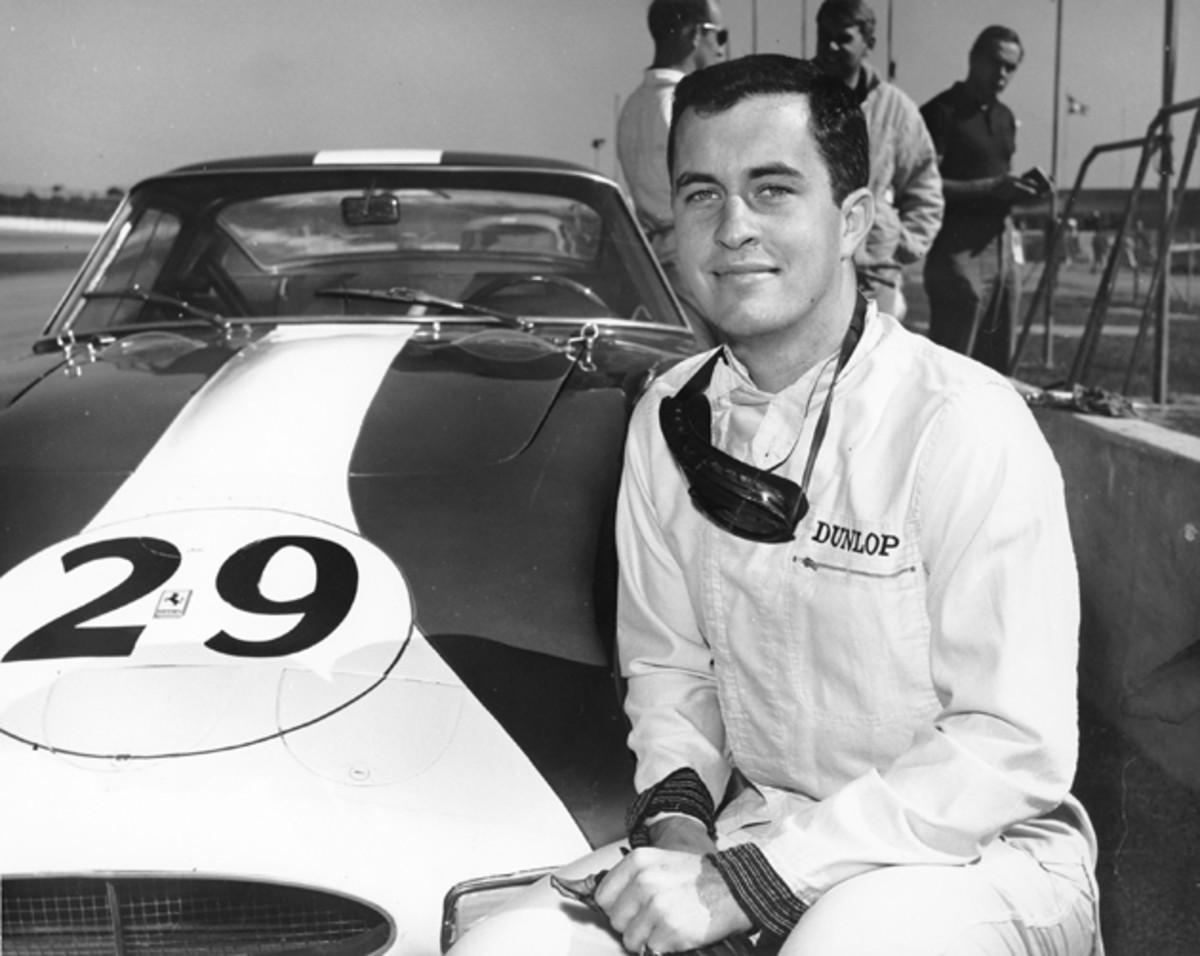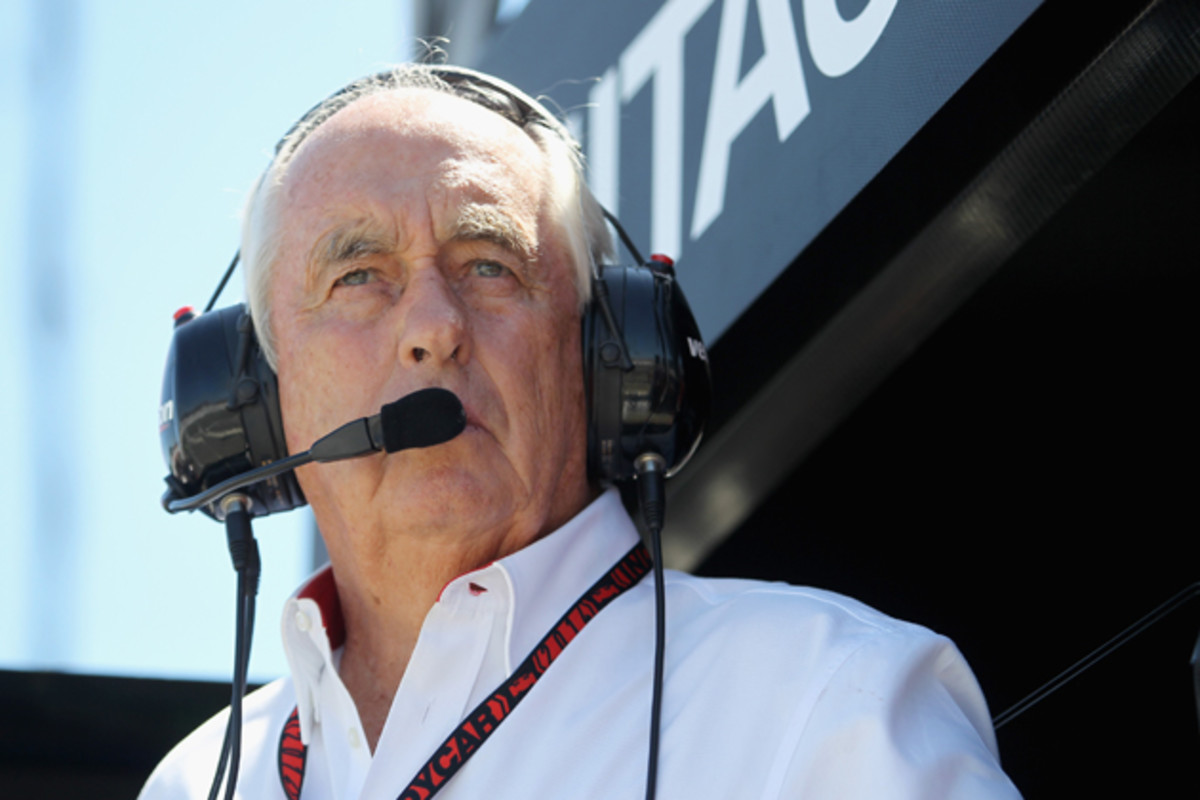Roger Penske conquered the business world by following his love for racing

One wouldn’t expect a 77-year-old man who runs an automotive industry fiefdom that is on track to take in more than $20 billion this year, whose very name is synonymous with racing, to consider the road not taken. But sometimes Roger Penske wonders what might have been if he had accepted an invitation to try out for the Indianapolis 500.
This was back in 1965, when Penske, a 28-year-old Lehigh graduate from Shaker Heights, Ohio, was trying to make it as a driver. As a rookie, in '61, he took the checkered flag in three consecutive national events, earning a Sports Car Club of America championship and SI's nod as the Sports Car driver of the year. He would win eight more races over the next three years.

An Indy 500 tryout would mark a big breakthrough for any other driver in such a position, but for Penske it presented a business decision. Besides racing, he had just bought a Chevrolet dealership in the Philadelphia area. Pursuing his driving career would threaten his ability to pay back the $75,000 he borrowed from his father, Jay, to start the dealership. "He was retired and went into his savings account," Penske says. "I couldn't be at the racetrack risking whatever I had. Racing drivers' compensation in those days was nil compared to what they get today."
Joey Logano, Team Penske agree to multi-year contract extension
So Penske climbed out of the cockpit and left his once-in-a-lifetime opportunity to a racer from Italy named Mario Andretti. A year later, after establishing himself in business, Penske started his own race team, applying the standards he learned during three summers in military camp. Penske's teams had a signature aesthetic: young guys in matching crew cuts and coveralls attending to the most immaculate cars on the grid. "We just wanted to be different," says Penske. "The preparation, the way we looked, was key."
After expanding into IndyCar racing in 1968, his team set itself apart in another way: by winning. A lot. With driver Mark Donohue, Penske claimed his first victory at the Brickyard in 1972. With the many Indy wins that followed, a record 15 in all, Penske built a reputation and a name that served to enhance his other enterprises. "That's a four-hour race, probably one of the most watched racing shows in the world," says Penske, adding that he doesn't have much of an advertising budget. "And when you can lead that race or win 15 times, it's a tremendous impact on your brand."

By the early '70s, Penske had expanded to the Formula One and the NASCAR circuits and his brand had added a couple of other car dealerships and a cluster of truck-leasing companies in eastern Pennsylvania. Instead of simply going to banks to raise the capital to expand his businesses, Penske also converted his sponsorship relationships with companies such as General Electric and General Motors into off-track partnerships and grew his regional operations into national networks. Today Penske Corporation includes Penske Truck Leasing and 30% of Penske Automotive Group. The leasing company has 200,000 vehicles across more than 3,000 locations around the world. The Automotive Group, the country's second-largest publicly traded auto retailer, has 179 dealerships in the U.S. and 147 more worldwide. A logistics firm and a lighting manufacturer round out his portfolio.
Penske attributes the success to a focus on customer satisfaction. One example: In the 1990s, when an engine manufacturer Penske once owned a majority of, Detroit Diesel, was late in shipping fuel injectors to a Mercedes-Benz plant, he loaded the parts onto his Gulfstream IV and delivered them to Stuttgart, Germany, himself.
Penske takes a similarly personal approach with employees—knowing not just their names but details of their lives. He also asks a lot of them. "I wouldn't call him a hard coach," says Penske Sprint Cup driver Brad Keselowski, "because a hard coach would be one that tells you, 'Look, you suck. You gotta get better.' Roger is incredibly supportive—but very direct, no-nonsense, with his eye on the ball at all times."
Former All-Pro safety Gary Fencik is now a star in the financial world
Adds Penske team president Tim Cindric, "There are a lot of skilled people who don't survive very well in this environment. You have to take pride in the details, have initiative, and make things better."
When he finds the sort of high achievers that mesh with his management style, Penske hangs onto them. "Our belief," Cindric continues, "is that if you have a place that's hard to get into, it's also a place that's hard to leave."
He is similarly loyal to the people and places that have helped him along the way. Penske has been a Detroit staple since opening his first dealership there in the late 1960s, and he has lived in the area for the last quarter century. It has saddened him to see the city fall on hard times. So when Ford executive chairman Bill Ford asked the racing giant to chair the Super Bowl XL committee in 2006, Penske accepted the opportunity to help.

In the months that followed, Penske did everything from shoveling snow to organizing meetings to consulting on the spacing between chairs. His work resulted in a trouble-free Super Bowl that showed the city still had potential. And he hasn't stopped tending to Detroit since. Clean Downtown is an initiative he formed with other business leaders to hire the unemployed and disadvantaged to clean streets. In addition to a uniform and one meal per eight-hour shift, the workers get training that will help them land full-time work. Penske even recruited other business leaders to buy the city 100 police cars and 23 EMS units. He drafted designs for a light-rail system that will connect the city to the suburbs, and helped transform Belle Isle from an eyesore in the Detroit River to an attraction that includes a zoo, a golf course and a 2.36-mile racetrack that hosts the IndyCar Belle Isle Grand Prix.
'Golden Bear' Jack Nicklaus is cultivating an empire built on golf
This year Hélio Castroneves took the checkered flag for Team Penske at Belle Isle—one of a team-record 22 victories across all IndyCar and NASCAR divisions. In the process Penske also became one of, if not the only, owners to hold series championships in the Indy and Nationwide circuits at the same time. (Will Power won Penske's 13th IndyCar title, while Keselowski collaborated with four other drivers to seize his second Nationwide crown.) Penske had a chance to add to that haul when Joey Logano made it to the final four of the Sprint Cup at Homestead-Miami Speedway last month, but a flubbed pit stop late in the race dashed those hopes.
It's likely that the near-miss will only raise Penske's standards for 2015. Along with his American racing outfits, he will field a team in Australia's version of NASCAR, the V8 Supercars series. His pilot of choice, Australian Marcos Ambrose, is not only a recent NASCAR transplant but also a former two-time V8 Supercars series champion. That the addition of this team comes as Penske Corp. moves deeper into the Pacific Rim is no coincidence. "The sports tie-in has helped us," Penske says. "We've used it as customer entertainment, we've used it as employee motivation and we've certainly used it to demonstrate execution and quality. Those are things we can say are by-products of a successful race team."
Had Penske continued on his one-track course as a driver, he might have achieved fleeting glory. But by becoming an owner and entrepreneur, he paved a speedway to lasting influence and continued success.
